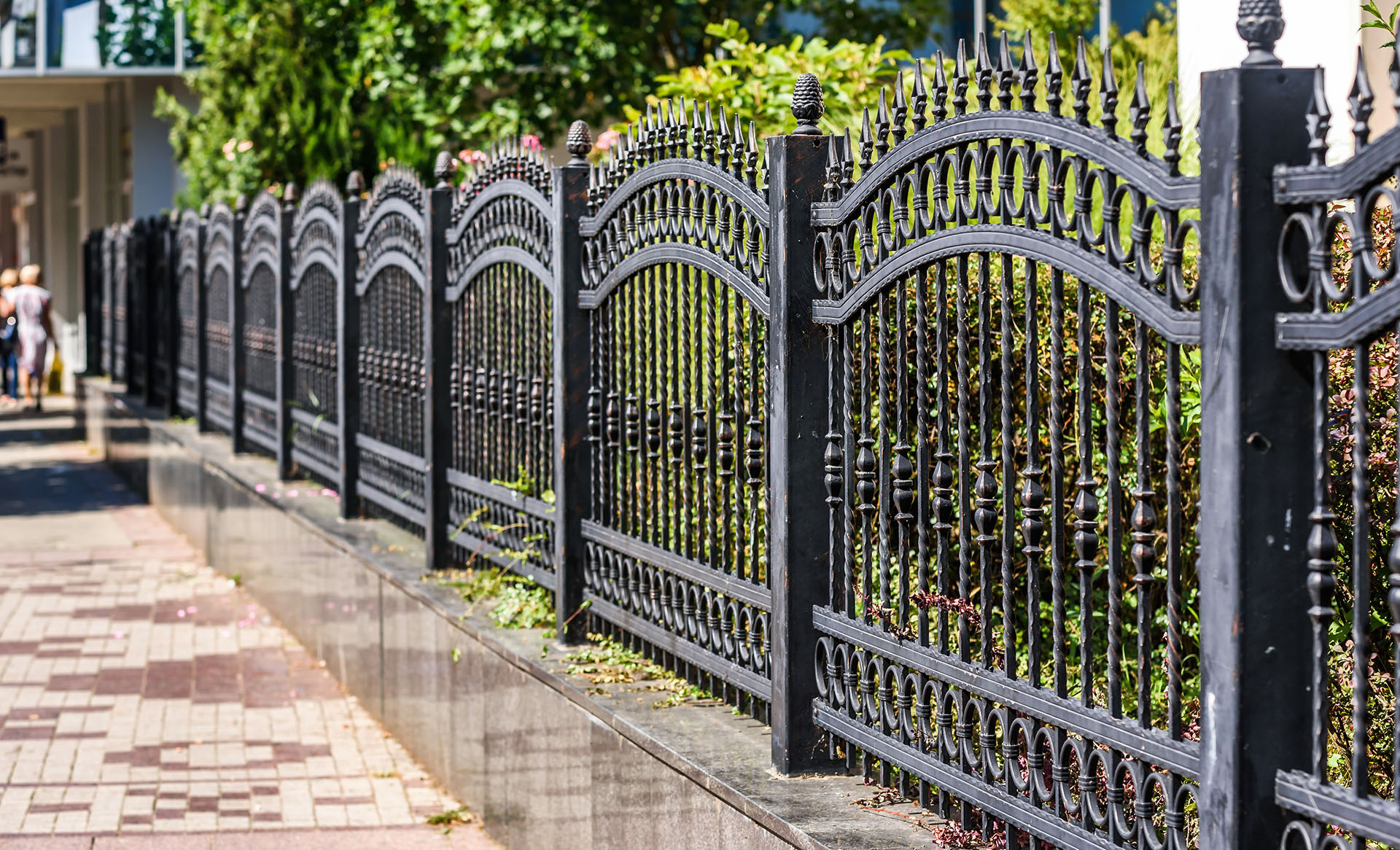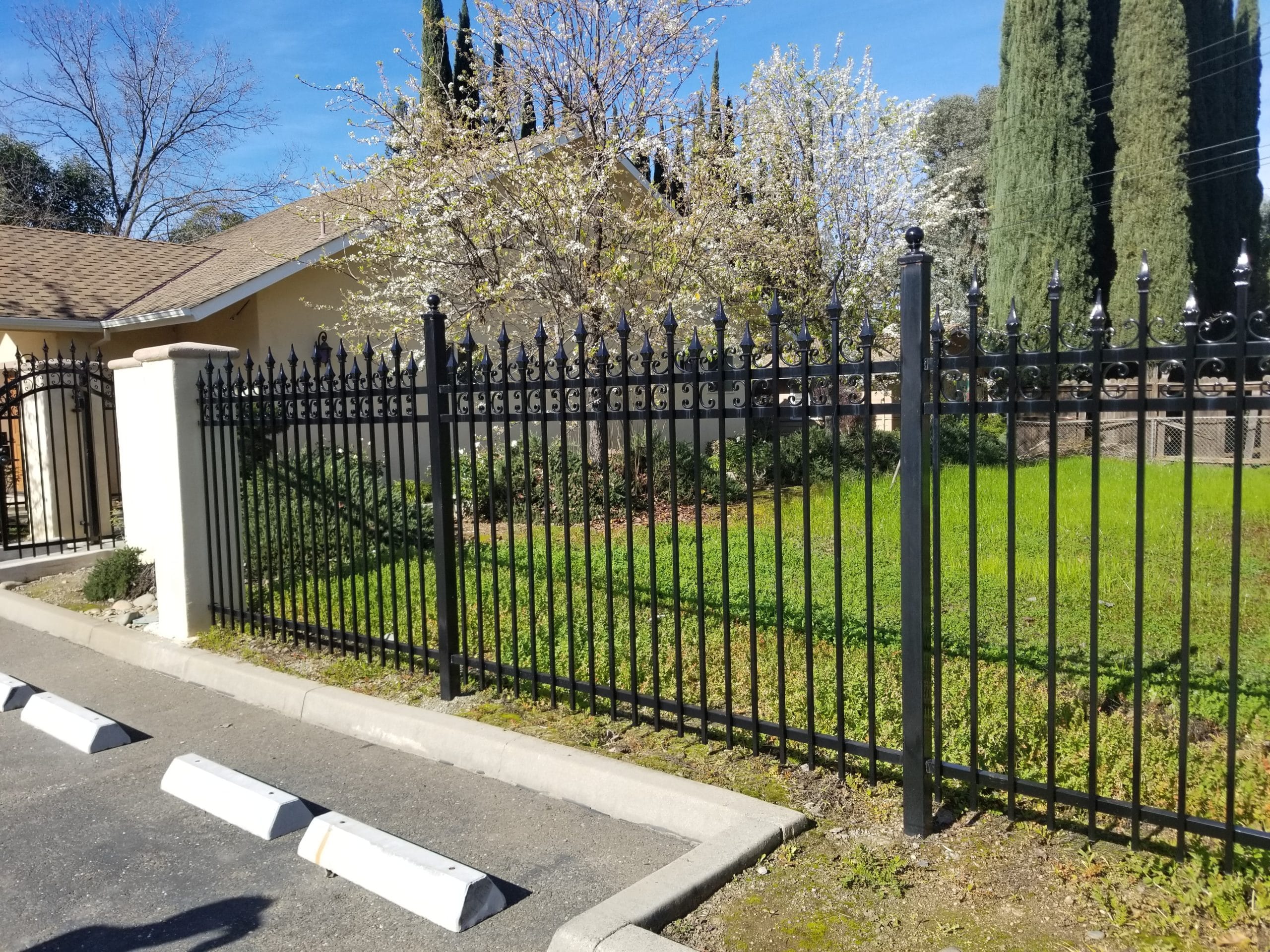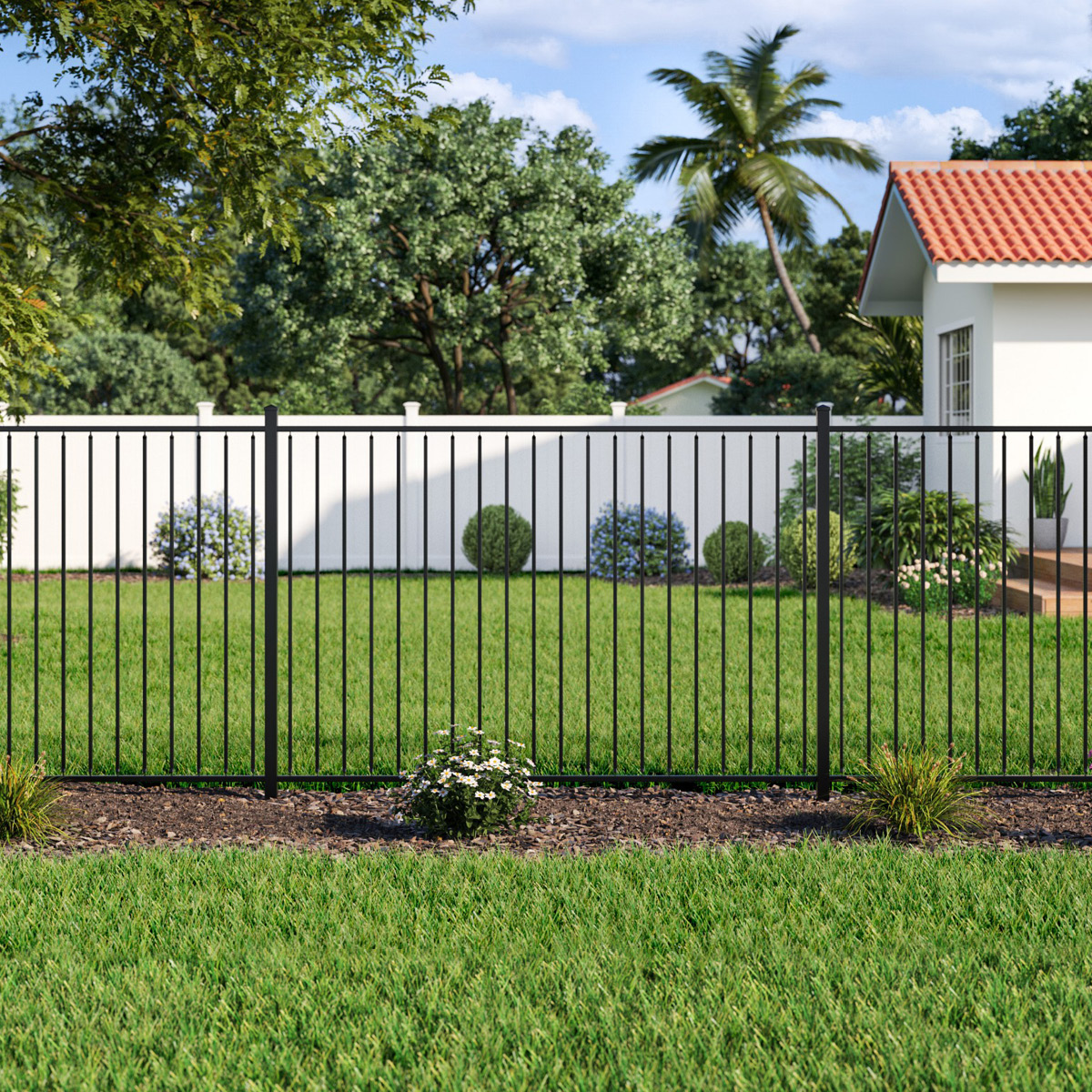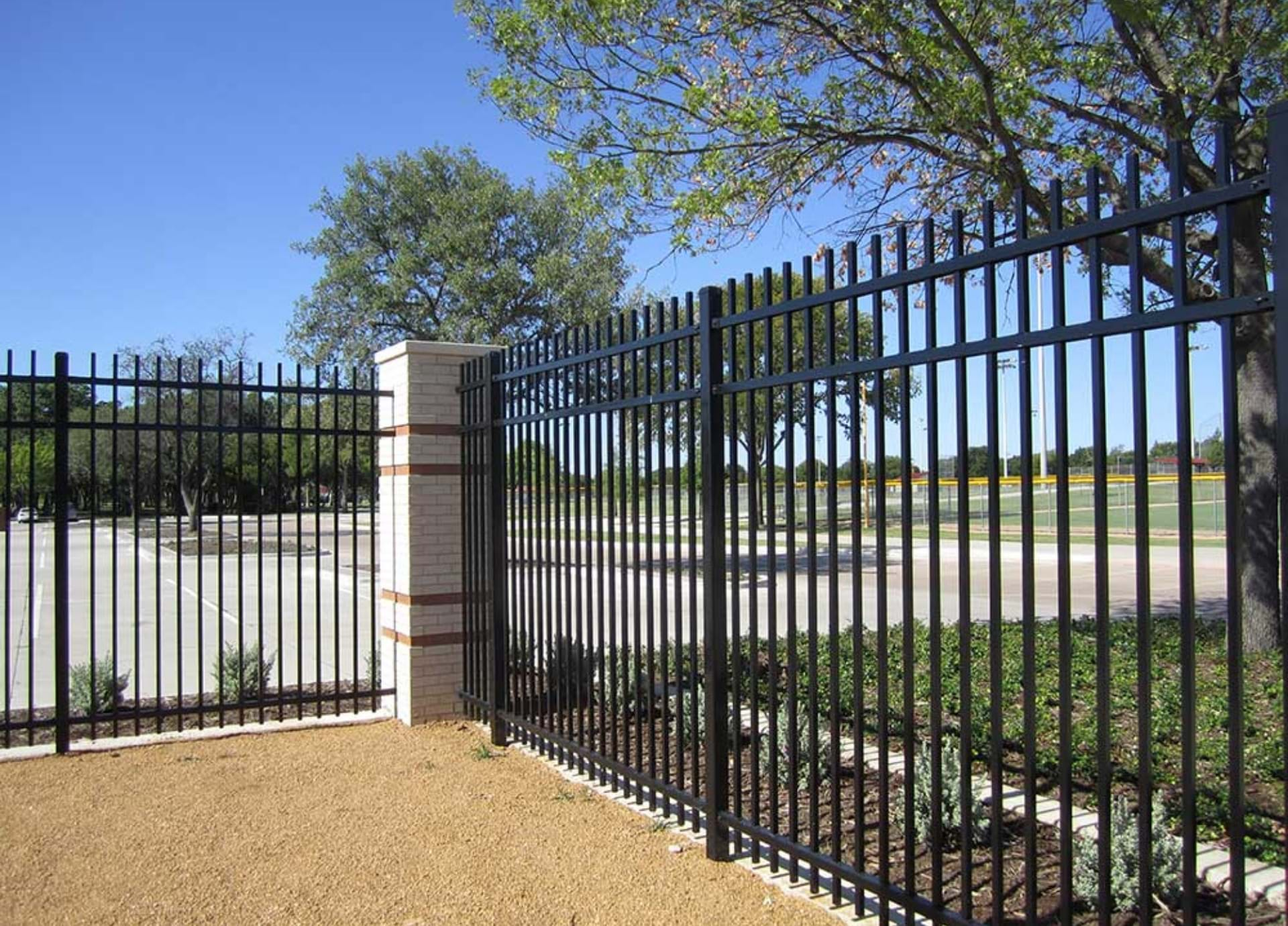A metal fence is a strong and stylish addition to any property, offering both security and aesthetic appeal. However, like any outdoor feature, it requires regular maintenance to keep it looking its best and functioning properly. Neglecting upkeep can lead to rust, corrosion, and other issues that compromise both the fence’s appearance and durability.
Fortunately, maintaining a metal fence doesn’t have to be a daunting task. With a few simple tips, you can easily preserve its condition and extend its lifespan. In this blog today, we will explore seven easy tips for maintaining your metal fence, ensuring it remains a robust and attractive part of your property for years to come. Let’s dive into these practical and effective maintenance strategies.
Table of Contents
ToggleWhat is Metal Fence?

A metal fence is a sturdy and versatile barrier constructed from various types of metals, designed to provide security, privacy, and aesthetic appeal to properties. These fences are commonly made from materials like wrought iron, steel, aluminum, and chain-link.
Types of Metal Fences

- Wrought Iron Fences: Known for their classic and elegant designs, wrought iron fences are often used for decorative purposes as well as security. They are highly durable and can be customized with intricate patterns and shapes.
- Steel Fences: Steel fences are extremely strong and provide excellent security. They can be galvanized or powder-coated to resist rust and corrosion, making them suitable for both residential and industrial applications.
- Aluminum Fences: Lightweight and resistant to rust, aluminum fences are a popular choice for residential properties. They come in various styles and colors and require minimal maintenance compared to other metal fences.
- Chain-Link Fences: Made from interwoven steel wires, chain-link fences are commonly used for security and boundary delineation. They are cost-effective and easy to install, making them popular for both residential and commercial use.
Pros of Metal Fence

Durability and Longevity
Metal fences, especially those made from materials like wrought iron or aluminum, are extremely durable and can withstand harsh weather conditions, including heavy rain, strong winds, and extreme temperatures. They are less likely to warp, crack, or rot compared to wood fences, and with proper maintenance, they can last for decades. This longevity makes them a cost-effective investment over time, as they require fewer replacements and repairs.
Security
Metal fences provide a high level of security due to their strength and robust construction. They are difficult to break or cut through, making them an effective barrier against intruders. Metal fences can also be designed with pointed tops or other deterrent features to enhance security. This makes them ideal for both residential and commercial properties where safety and security are a priority.
Low Maintenance
While metal fences do require some maintenance, such as painting or applying rust-resistant coatings, they generally require less upkeep than wooden fences. They do not suffer from issues like termite damage, rot, or warping. Regular inspections and minor maintenance can keep a metal fence looking new and functioning well for many years, making it a practical choice for homeowners who prefer low-maintenance options.
Aesthetic Appeal
Metal fences offer a timeless and elegant look that can enhance the overall appearance of a property. They come in various designs, from intricate wrought iron patterns to sleek and modern aluminum styles, allowing homeowners to choose a fence that complements their home’s architecture and landscaping. Customizable options are available, enabling unique and personalized designs that can boost curb appeal and add value to the property.
Versatility
Metal fences are highly versatile and can be used for a variety of applications, including residential properties, commercial properties, parks, and public spaces. They can be designed to provide different levels of privacy and security, and can be used to enclose entire properties, gardens, pools, or other specific areas. The flexibility in design and function makes metal fences suitable for a wide range of settings and purposes.
Environmental Friendliness
Many metal fences, particularly those made from aluminum, are environmentally friendly as they can be recycled at the end of their lifespan. Aluminum, in particular, is often made from recycled materials, reducing the overall environmental impact. Additionally, metal fences do not require the use of harsh chemicals or treatments to maintain their integrity, unlike some wooden fences that need preservatives and treatments to prevent rot and insect damage.
Cons of Metal Fences

Susceptibility to Rust and Corrosion
Metal fences, particularly those made from iron or steel, are prone to rust and corrosion when exposed to moisture, humidity, and harsh weather conditions. This can significantly weaken the structure of the fence over time. To prevent rust, regular maintenance such as applying rust-resistant coatings or paints is necessary. This ongoing maintenance can be both time-consuming and costly, and if neglected, rust can spread and compromise the fence’s integrity, leading to costly repairs or replacements.
High Initial Cost
The initial cost of purchasing and installing a metal fence can be considerably higher compared to other materials like wood or vinyl. High-quality metals such as wrought iron or aluminum can be particularly expensive. Additionally, the installation process often requires specialized skills and tools, potentially necessitating professional installation services, which further increases the overall cost. This high upfront investment may not be feasible for all homeowners.
Heat Retention
Metal fences can absorb and retain heat from the sun, becoming very hot to the touch during warm weather. This can be a safety concern, especially for children and pets who might accidentally come into contact with the fence. In hotter climates, the heat retention can also make the surrounding area uncomfortable, affecting the usability of outdoor spaces during peak sunlight hours.
Installation Complexity
Installing a metal fence can be more complex and labor-intensive than installing fences made from other materials. The process often involves heavy materials that require precise alignment and secure anchoring. Professional installation is usually recommended to ensure the fence is properly installed, which adds to the overall expense. Additionally, the installation process can be time-consuming, disrupting the property for a longer period compared to simpler fencing options.
7 Easy Tips for Maintaining Your Metal Fence

Regular Cleaning
Keeping your metal fence clean is fundamental to its maintenance. Over time, dirt, grime, and environmental pollutants can accumulate on the surface, leading to deterioration. Use a mixture of mild soap and water to gently scrub the fence with a soft cloth or sponge. For tougher spots, a soft-bristle brush can be used to remove stubborn debris. Rinse thoroughly with water to ensure all soap residues are washed away, as they can attract more dirt if left behind. This routine not only keeps your fence looking fresh but also helps prevent long-term damage caused by corrosive elements.
Rust Prevention
Rust is the most common issue with metal fences, particularly those made of iron or steel. Regularly inspect your fence for any signs of rust, especially in joints, hinges, and areas where the protective coating may have chipped away. If you detect rust, use a wire brush, sandpaper, or a rust remover to eliminate it completely.
Once the rust is removed, apply a rust-inhibiting primer followed by a paint or sealant designed for metal surfaces. Regular rust treatment and reapplication of protective coatings are vital to preventing further rusting and prolonging the life of your fence.
Check for Damage
Periodic inspections are crucial to catch and address any damage early. Examine your fence for any bent or loose sections, missing bolts, or broken welds. Physical impacts, weather conditions, or natural wear and tear can cause these issues.
Promptly tighten any loose bolts, use appropriate tools to straighten bent sections, and repair or re-weld any broken joints. Addressing these problems as soon as they arise prevents minor issues from escalating into significant, more costly repairs.
Apply Protective Coatings
Protective coatings are essential for safeguarding your metal fence against the elements. Paints, sealants, or specialized coatings provide a barrier that protects the metal from moisture, UV rays, and other environmental factors that can lead to rust and corrosion. Choose high-quality, weather-resistant products and reapply the coating every few years or as needed, especially if you notice it wearing off. Consistently maintaining the protective layer ensures your fence remains in good condition and extends its lifespan.
Trim Surrounding Vegetation
Vegetation around your metal fence can cause various problems if left unchecked. Overgrown plants, shrubs, and trees can scratch the surface, trap moisture against the fence, and promote rust and corrosion. Regularly trim back any vegetation that is close to or touching the fence. This not only prevents physical damage but also ensures adequate airflow around the fence, helping it dry quickly after rain and reducing the risk of rust formation.
Lubricate Moving Parts
If your metal fence includes gates, hinges, or any other moving parts, regular lubrication is essential to keep them functioning smoothly. Use a high-quality, weather-resistant lubricant on hinges, latches, and locks to prevent them from rusting and seizing up. Apply the lubricant every few months or as needed, depending on the frequency of use and weather conditions. Proper lubrication ensures the longevity and smooth operation of your fence’s moving components.
Seasonal Maintenance
Different seasons bring various challenges to the maintenance of a metal fence. In winter, remove snow and ice buildup promptly using a plastic shovel or broom to avoid scratching the surface. In spring, inspect for any damage caused by winter weather and address it immediately. Summer and fall are ideal times for cleaning, repainting, and applying protective coatings.
Regular seasonal maintenance ensures your fence remains in optimal condition throughout the year, ready to withstand whatever weather comes its way.
Conclusion
Maintaining your metal fence doesn’t have to be a daunting task. By following these seven easy tips, you can ensure your fence remains in excellent condition for years to come. Regular cleaning, rust prevention, and timely repairs are key to preserving its durability and appearance.
Additionally, applying protective coatings and keeping surrounding vegetation trimmed back will further extend the life of your fence. Proper lubrication of moving parts and seasonal maintenance will keep your fence functioning smoothly and looking its best. With a little effort and attention, your metal fence will continue to provide security, privacy, and aesthetic appeal to your property.




